Review: Canon EOS R5 and RF 100-500 F4.5-7.1

Disclaimer: The following review of the Canon EOS R5 mirrorless camera and Canon EOS RF 100-500mm F4.5-7.1 telephoto lens is not a technical review, it is a hands-on “here’s how it feels, shoots and performs” kind of review with lots of sample images. I am sponsored by Canon and am a Canon Ambassador, so I was fortunate enough to get to field test the R5 with the 100-500 and with an adapter and all of my regular EF lenses for a week in early June 2020. This review is based on those field tests, which were more me taking the gear and using it in real wildlife photography situations than actually doing any kind of technical testing.
All images shot on pre-production models of the Canon EOS R5 and the Canon RF 100-500mm F4.5-7.1. Note that I was not able to import these RAW files into Lightroom as part of my normal workflow, so post-processing was limited.

The Bottom Line: Worth the Money or Not?
If all you really want to do is find out if you should be buying either the R5 or the 100-500mm, or both, then I’ll cut right to the chase and give you my two cents and you can move on without reading any further or looking at all of the images.
The bottom line is that when I had to send this R5 and 100-500 combo back to Canon on June 16th, I felt a tremendous pang of disappointment that I was going to have to wait a month or two to get them back in my hands again. I LOVED shooting mirrorless on such a beautiful, little, light camera and combined with the incredibly balanced, ridiculously light and small 100-500, I found myself using that combo way more than I thought I would going in. I thought I was going to have issues with only being able to shoot at F7.1 wide open and that the R5 would not be that great at high ISOs and that I’d miss my good old 1DX2 and my 500mm F4. And yes, I DO wish that the 100-500 was an F5.6 lens, but in the end, I just didn’t find myself missing shots because it was 7.1 and I certainly didn’t find myself missing my bulky, workhorse 1DX2, or even my 5DIV, for that matter.
So the bottom line is that I’m moving over to mirrorless completely. The R5 is a gorgeous, sexy beast and I will have two of them in my bag within the month (Canon actually just sent me one this week), and I will be selling my 100-400 F4.5-5.6 and getting the superbly sharp RF 100-500 F4.5-7.1 (along with the RF 70-200 F2.8) to compliment my EF 500mm F4. Read on if you want to find out why…
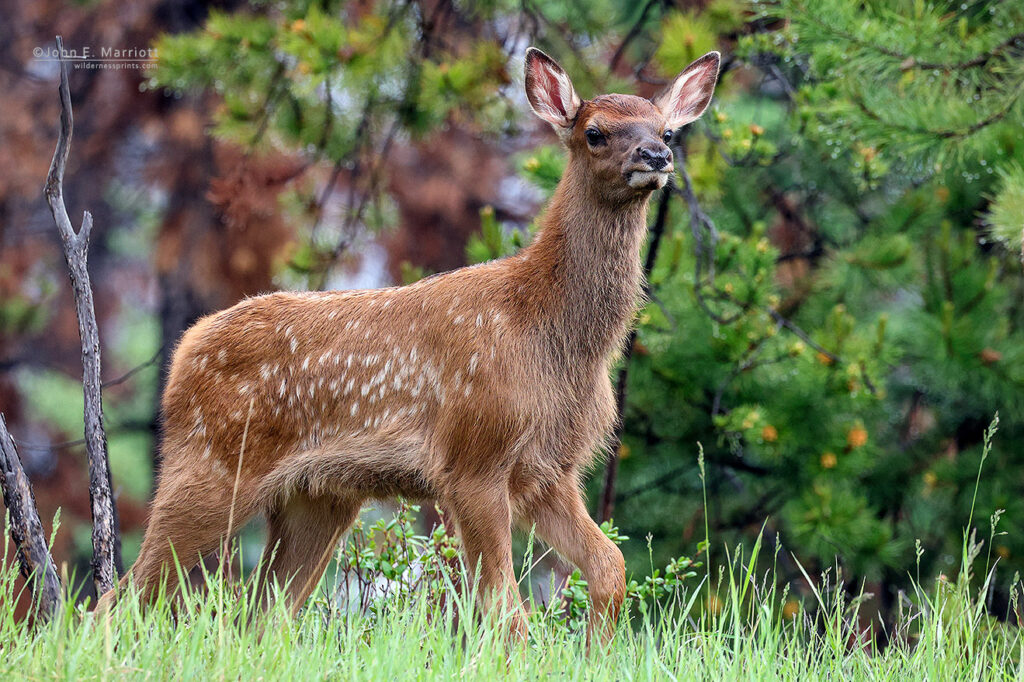
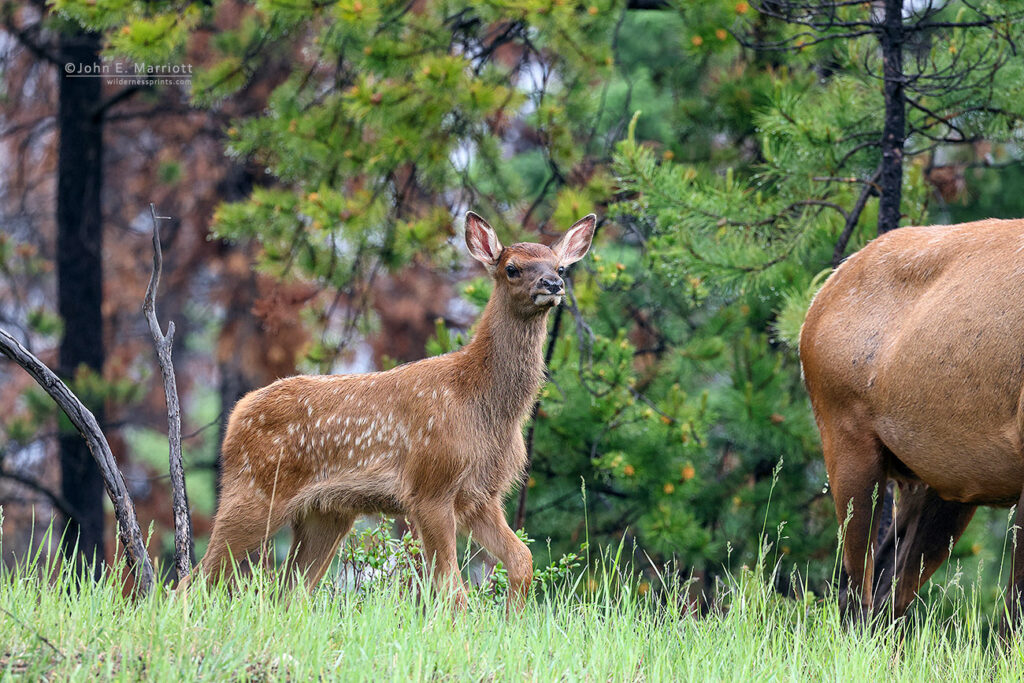
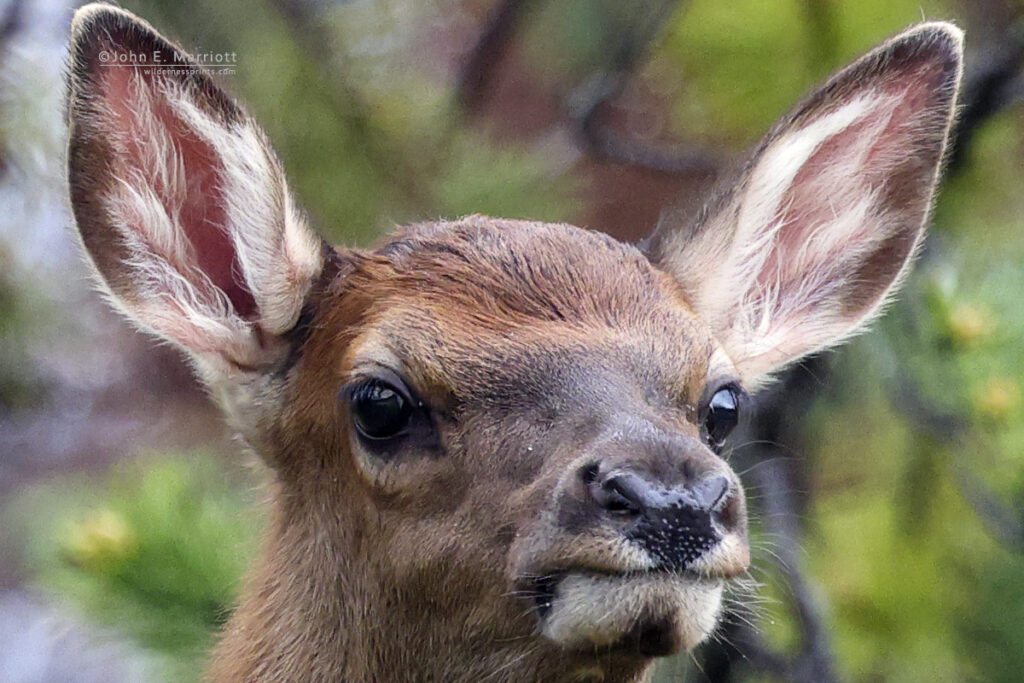
The First Few Days
I received the R5 and the 100-500 while I was still up at the Northern Lights Wildlife Shelter volunteering with my family in early June. The package arrived including the R5 body, the 100–500mm lens, cards, card readers, extra batteries, an RF 70-200mm F2.8, an EF adapter, and both the 1.4x and 2x RF teleconverters. I’m not going to lie, I was pretty damn excited to open the box and felt like a kid at Christmas ooh-ing and aah-ing at all of the pretty boxes and gear!
First impressions of the new gear were all centered around one key concept: I could not believe how light and small everything was. For a wildlife photographer that spends a lot of my time tracking wildlife in the woods and wishing that I had lighter, more manageable gear to take with me on these treks in search of wolves, cougars and other hard-to-find predators, I was blown away by the weight and size of the new camera and lenses. The R5 and 100-500 together in particular felt just spectacular in my hands and I’m pretty sure I was already dreamily envisioning following beasts in the bush with the lightweight combo.
I immediately set out and did some test shooting at the Shelter that evening, before heading out for a day on a wild goose chase after a Kermode bear cub I’d heard had been sighted near Terrace, BC (I discovered that the cub had been sighted five years previously, not in 2020, so it really was a wild goose chase).

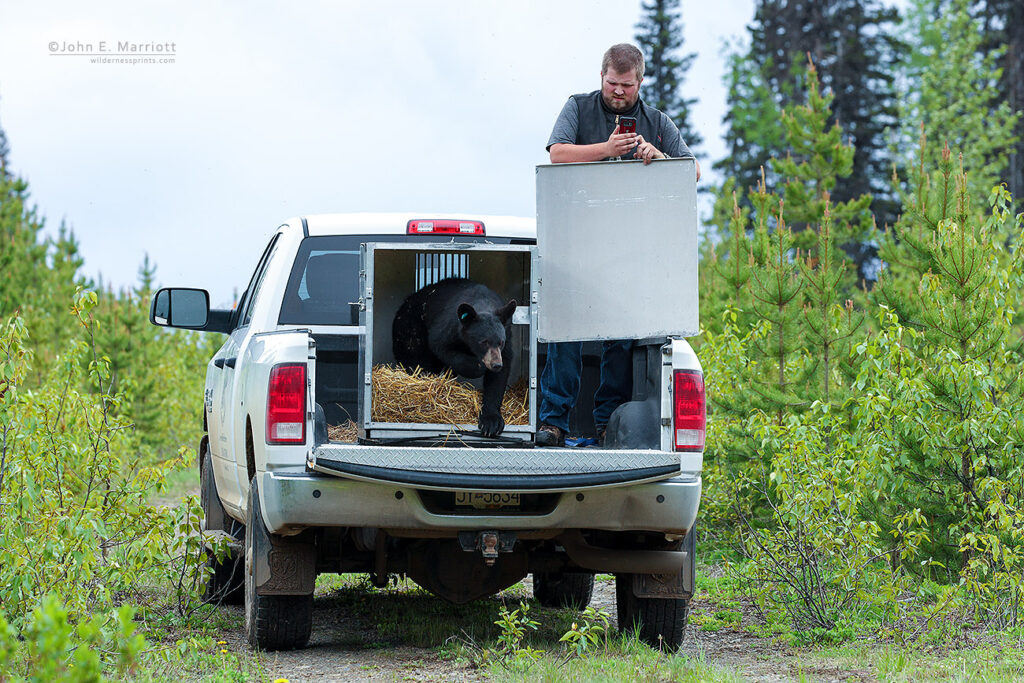
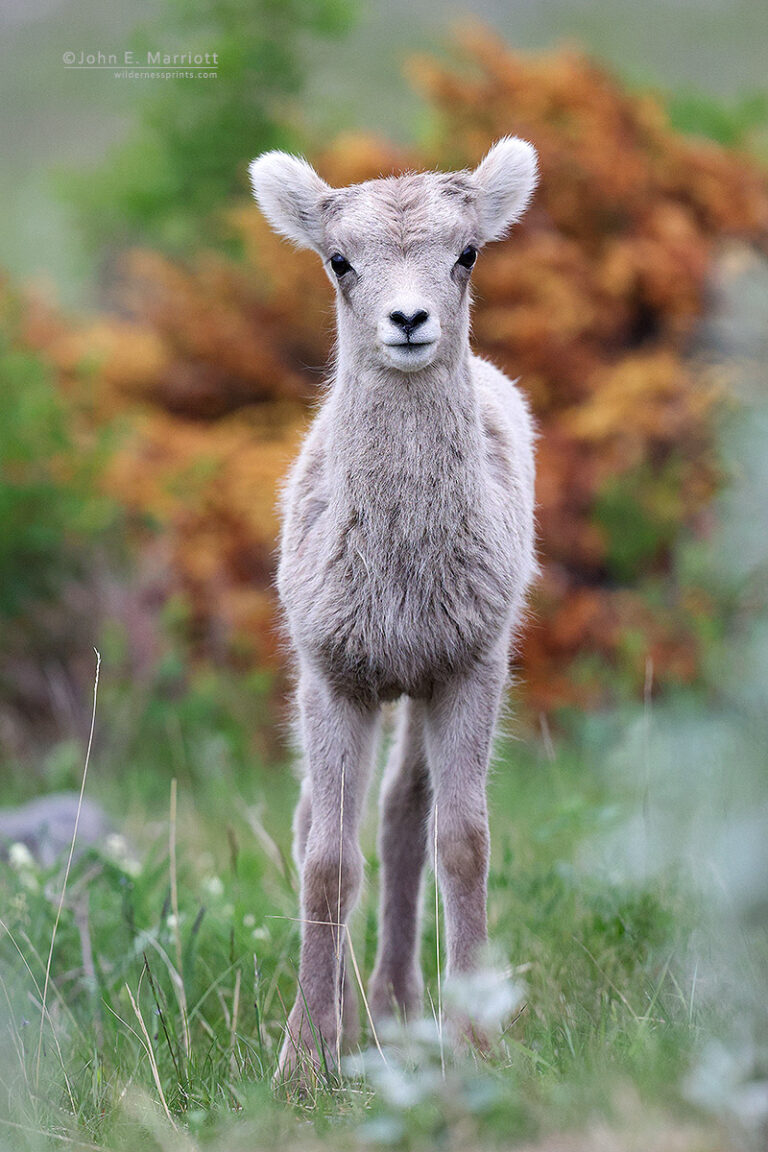
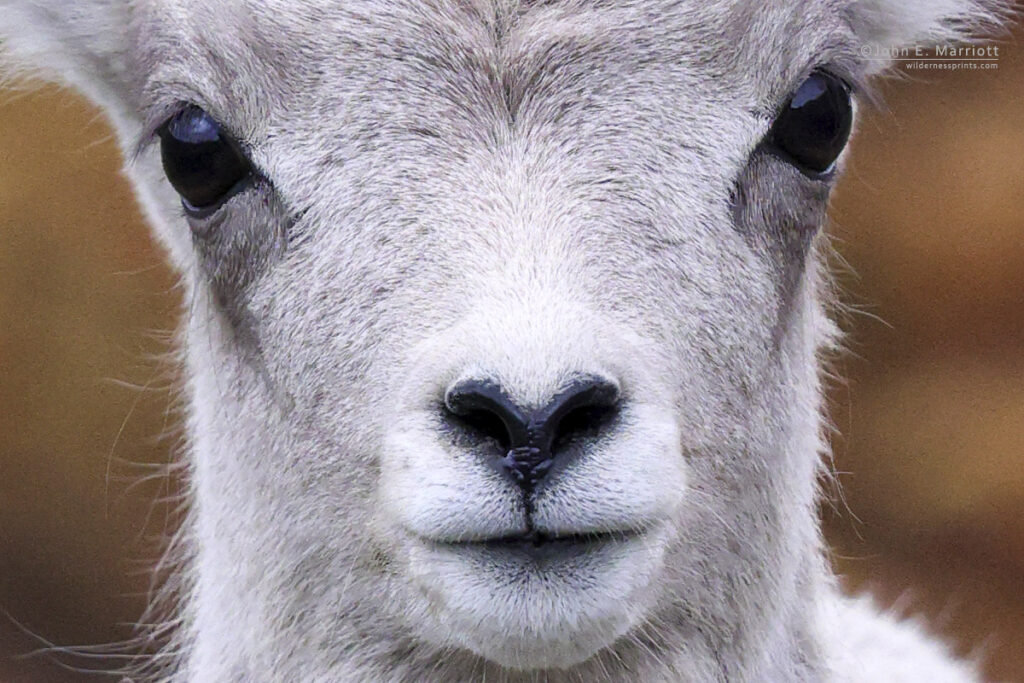
The R5 performed very well on both the RF 70-200, the RF 100-500 and my EF 500mm. It produces files with just superb clarity on any of these lenses, such that you can take an image like the bighorn sheep lamb above, crop it 30% and STILL end up with an incredibly sharp, rich, vibrant 14″ x 21″ 300 dpi file that could easily be printed sharply up to 40″ x 60″, as an example.
Testing the R5 in Low Light
One of my biggest questions heading in to trying out the R5 was wondering how it would perform at high ISOs. After all, it’s a 45MP sensor, more than double the pixel count of the 1DX II, which I’ve found I can reliably shoot up to ISO 5000 provided I do some noise reduction on the files. For me, a good, usable file is always one that I can submit to a magazine and know instantly that it can be printed for a cover or a double page spread and not worry at all about sharpness or noise: so a 12″ x 18″ 300 dpi .tif file, the industry standard for stock photography for the past decade.
Now given that I was a bit limited in how I could process these files (I had to do a round-about conversion from Canon’s Digital Photo Professional – DPP software, which is slow and clunky, to a .tif file and then import that .tif into Lightroom, and even then, I was more limited than if I was working directly on a RAW file in LR), I was really happy with how a few of my tests went.
The following image is of a grizzly bear family in Jasper shot with the R5 and the 100-500mm AND the 1.4x TC at ISO 6400. So basically pushing the crap out of the camera and lens combo to see if I could get something usable and actually good out of the end result. Note that this would have been way beyond the capabilities of the Canon EOS 5D Mark IV with the 100-400 and a 1.4x TC at ISO 6400, and it would be right at the absolute upper limits for my 1DX II with the 100-400 and a 1.4x TC — I probably wouldn’t have been able to get anything solid that would give me a good, usable 12″ x 18″ 300 dpi file, but it might have been possible.
At full size (which is an 18″ x 27″ 350 dpi file), even with some noise reduction, the file was noisy and not as sharp as I’d like. But when it’s downsized to 12″ x 18″ (which is basically the native resolution of the 1DX II) at 300 dpi, all of a sudden you have a very nice file, not perfect, but more than usable.
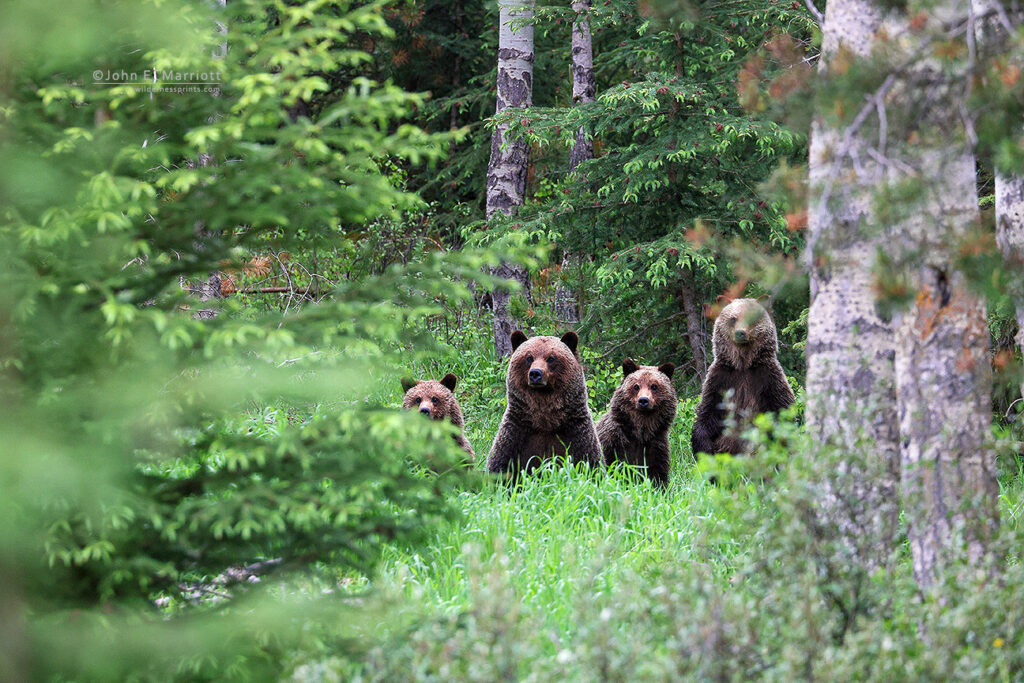

R5 Autofocus, Battery Life & More

I found battery life to be very good for the R5, though of course I didn’t get to test it in cold conditions. Like most of you will be doing, I mostly stuck to using the R5 as a stills camera, though I did also mix in a little 4K video. I did not have any issues with over-heating or with battery life and don’t really expect to moving forward.
I also tried both the electronic and the mechanical shutter and there are a few things here worth mentioning. First, the electronic shutter is completely silent and shoots at 20 frames per second (fps). This is monstrous for wildlife photography at den sites and things like that where being as quiet as possible is one of the keys to having animals act naturally. The 20 fps is the same fps rate as the top end of the 1DX III. However, the one caveat in this for wildlife photography is that with moving subjects you do sometimes see the effects of rolling shutter (tilting parts of the image). I didn’t actually get to see this in any of my images, but it is something to be aware of (and this is not unique to Canon, all mirrorless cameras with electronic shutters do this).
I actually shot much more frequently with the mechanical shutter, which is still 12 fps and still very quiet (though not silent). This eliminates any concerns over the effects from a rolling shutter and worked wonderfully well.

The RF 100-500mm F4.5-7.1
A few notes about the 100-500. As I’ve already said repeatedly, it’s sharp throughout its range, it’s incredibly light and it’s very, very well-balanced to hand-hold when paired with the R5 or R6 (or R, for that matter). I did try it with the teleconverter quite a bit (though only the 1.4x, I just don’t feel the 2x is all that usable with an F7.1 lens at 500mm — you’d be shooting at F14 all the time), and was pleasantly surprised with some of the shots, but it definitely was not as sharp as the lens on its own. But really, when this goes in my bag, I’m never using it with a teleconverter, because if I need lots of reach, I’m going to be putting my TC on my big prime lens, not on this telephoto zoom. It’s the same principle I currently use with my 100-400mm lens, which never ever sees a TC on it. With that said, for those of you that will purchase this lens as your big lens, it works just fine with a teleconverter.
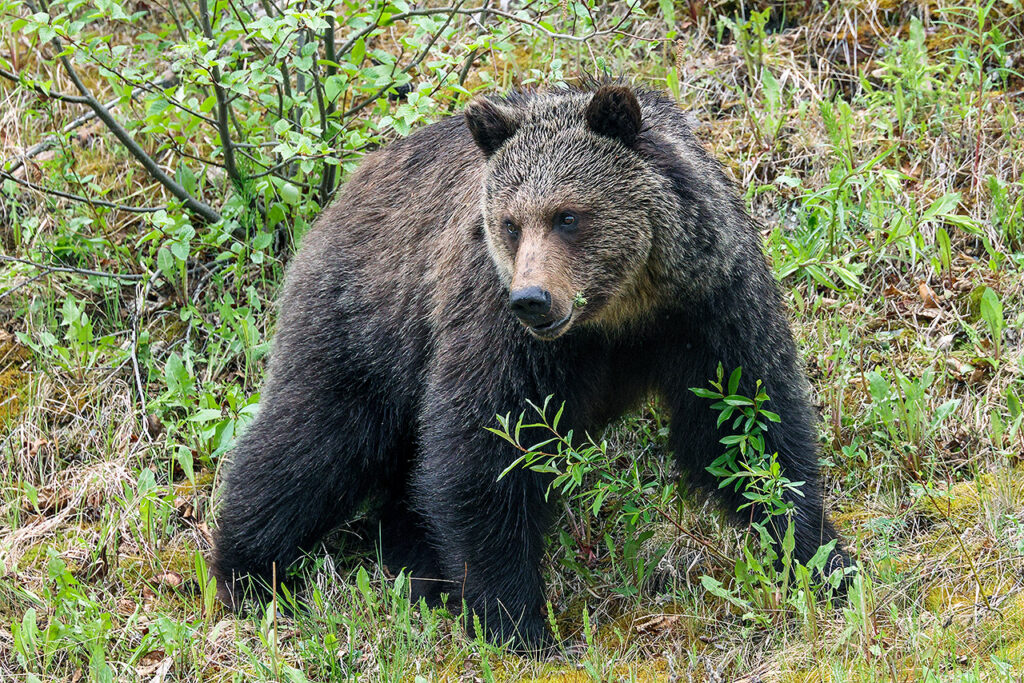
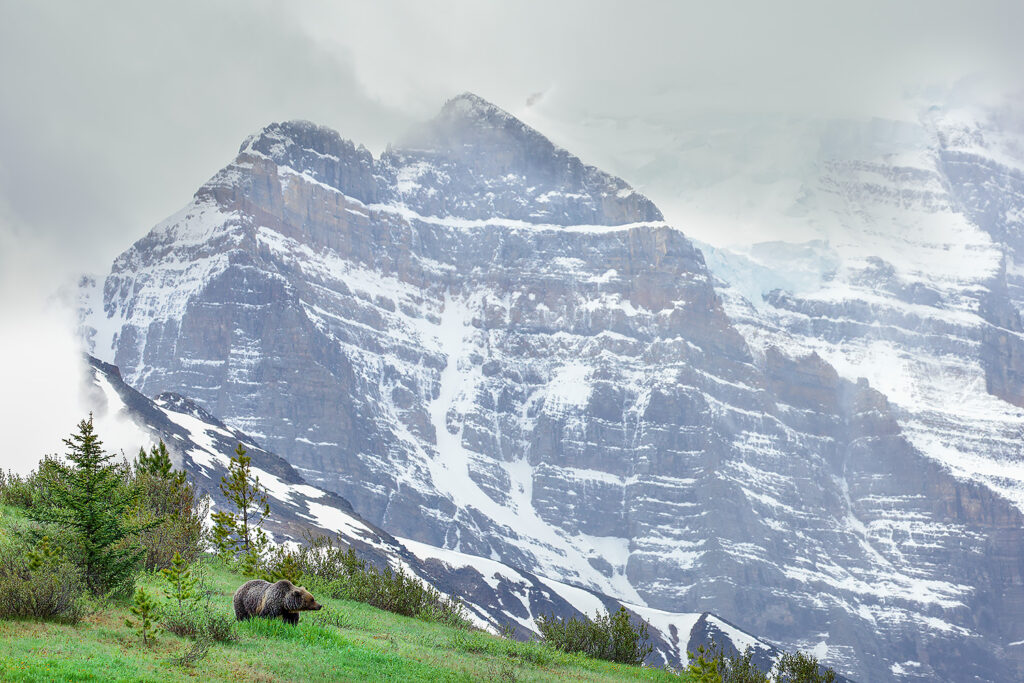
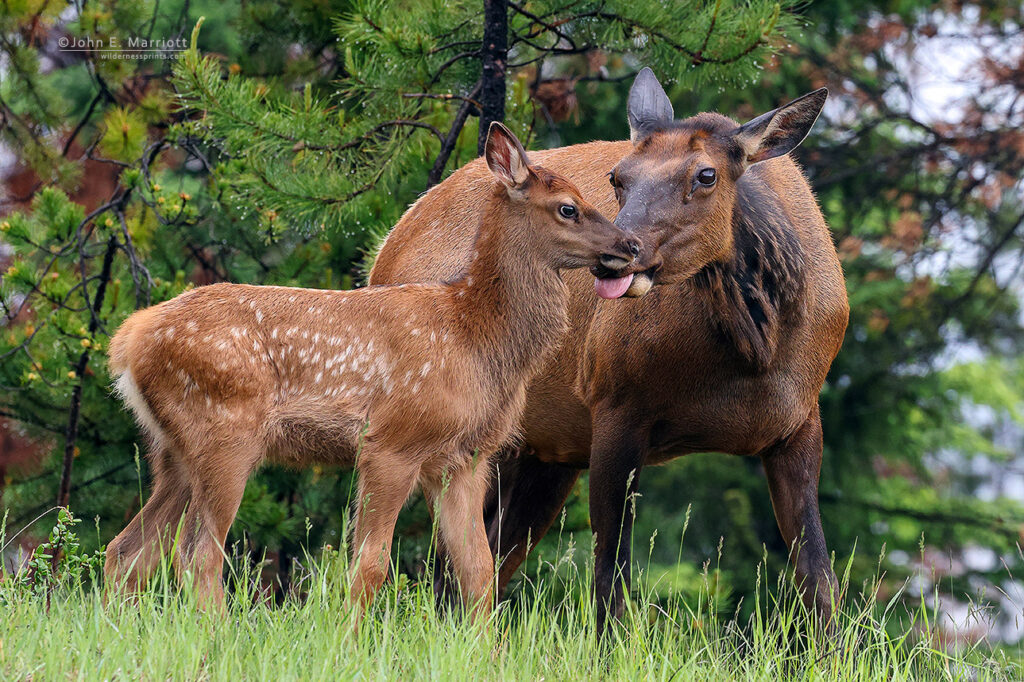
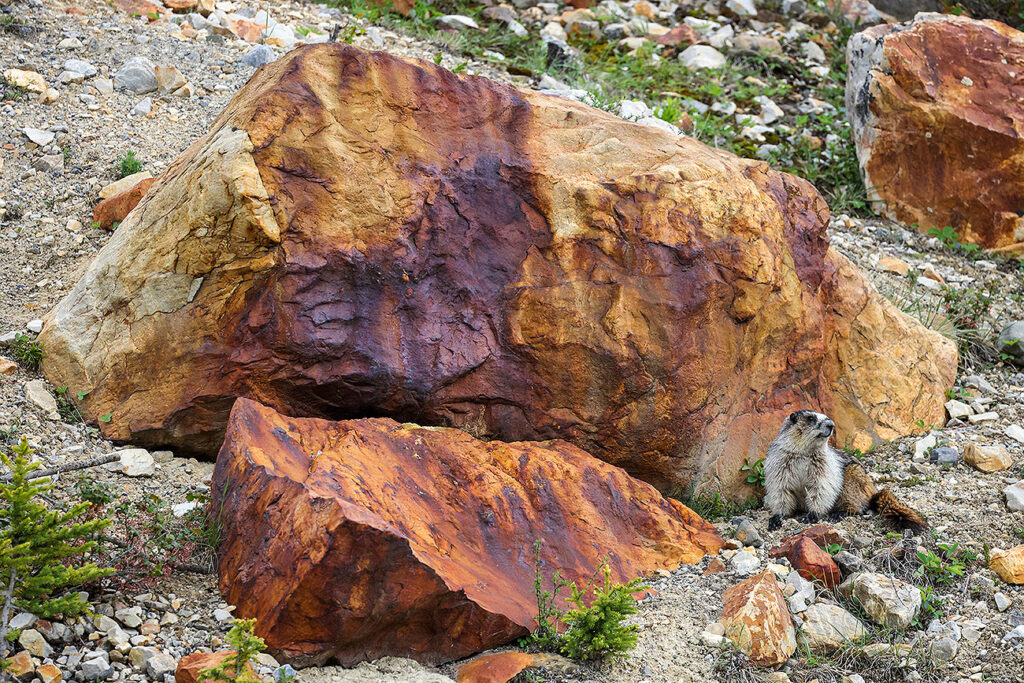
Final Thoughts
There’s not a lot of negative things to say about the Canon EOS R5 mirrorless and the RF 100-500mm F4.5-7.1 lens combo. These new releases have me incredibly excited to see what’s coming down the pipe in terms of future cameras and in particular, future lenses. But for now, I’m going to be picking up two R5’s and a 100-500 to compliment my 500mm F4 prime and will be selling off my 1DX II, my 5D IV and my 100-400. And I think that sentence says it all — I’m a full-time pro, I make my living off of my photography, and I’m switching fully to mirrorless and never looking back.
If you have questions, please don’t hesitate to put them in the Comments below and I’ll do my best to get back to everyone.

Mark Zablotsky
August 6, 2020 at 4:37 pmCommentHi John. Nice overview, and as always I enjoy your work. Wondering what you’ve experienced thus far with AIServo and birds in fight or wildlife moving quickly towards and away from you with the R5? Have to say while I still have my 1DxMk2 and my 5DMk4, and a ton of Canon glass, I have been using the Sony A7R4 and A9 mirrorless cameras mostly for lack of having a Canon player that could compete. I can’t keep going with both systems as it’s proving to be cost prohibitive. One other question, I have the new Canon 600 f4 IS, and wondering with the adapter how the image will look compared to no adapter on my other bodies, as well as how fast the focus is with you 500 and the adapter on the R5. Thanks so much for your time and expertise.
John E Marriott
August 6, 2020 at 5:01 pmHi Mark, thanks for the comments. I’d say this is probably the best AF system on the market now. And I know I’m not alone in thinking that, you can find lots of reviews online trumpeting the same thing. As for the 600, you won’t notice any difference at all in terms of image quality or focus responsiveness with the R5 and an adapter, the only real world difference is that your 600 becomes an inch longer.
Roberta J Olenick
August 6, 2020 at 7:33 pmHi John,
Thanks for the review. And of course I have a LOT of questions.
1. For most high MP cameras, you generally need a faster shutter speed (and better long lens technique) to get sharp images than for a lower MP camera. This is because the pixels are smaller in the former and so any camera movement or animal movement translates over into the next pixel sooner for small pixels while the same movement would be contained within one bigger pixel for the lower MP camera and thus not be visible in the image. (Hope how I worded that makes sense.) Certainly that is the case when I use my Nikon D850 vs my Canon 1DxII. Did you find that with the R5 – or does the IBIS coupled with the lens IS compensate for the extra MP issue?
2. The above questions assumes you can use IBIS and IS simultaneously. Is that correct?
3. Does the R5 with 500 f4 and adapter attached fit in your Gura Gear pack?
4. Can you reduce the frame rate for the electronic shutter and if you so, does that solve the rolling shutter issue? (I am guessing it would not, but hoping it might. 🙂 )
5. What is the durability and weather sealing like on the R5 compared to a 1DXII?
6. Does the R5 have an accessory grip that would make vertical shooting easier and also maybe help balance a light body like that against a big prime lens when using a gimbal head?
7. Does the R5 have a rotating LCD screen (nice for low angle shooting)?
8. How does the R5 compare to the 1DXII or 1DXIII for high ISO noise? I consider the 1DXII at 3200 pretty clean and if the R5 were that clean at that ISO I would be happy.
9. Rather than go your round about route to process the R5 files, can you not just convert the R5 RAW files to DNG files and then use Lightroom or PS? (I assume LR and ACR will soon be able to read R5 files anyway.)
10. You say the R5 probably has the best AF on the market now. Does it surpass the Sony mirrorless a9, Nikon D6 etc? If so, I’m in.
11. Will your R6 review compare the R5 and R6? That would be helpful.
Thanks!
Jon Huyer
August 7, 2020 at 9:46 amRoberta some answers:
(2) Yes
(6) https://www.thecamerastore.com/16695-Canon-BG-R10-Battery-Grip.aspx
(7) https://www.thecamerastore.com/16687-Canon-EOS-R5.aspx
John E Marriott
August 7, 2020 at 10:10 amRoberta, Jon answered a few of your questions, so I’ll skip those.
1. I did notice a difference in keepers w the R6 vs the R5 on animals in motion given the R6’s smaller MP count (same as the 1DX series), so it’s very possible there is a factor for that magnification to the larger sensor that doesn’t get mitigated out by the IBIS w the lens stabilization (though this was also hard to tell if I was actually getting any more stabilization from the 500 w the IBIS or not). However, I was also shooting with a pre-production model of the R5 (and the R6) so it could have just been that. What I do know, and what I told Jon in his comment, is that the R5 files are far, far more croppable when they’re sharp, which is a big thing for me. What I didn’t try was taking an almost sharp 45MP file and downsizing it to see what it looks like at a 20MP equivalent, because I suspect it would then be sharp.
3. Yes, barely. The adapter adds about an inch, but the body is slightly thinner than the 5D4 and quite a bit slimmer than the 1DX3.
4. Not that I could see, but I didn’t play around with it all that much, I was busy trying to find wildlife 😉 Haha.
5. Comparable to the 5D4, so not fully weather sealed, but damn good.
8. I did touch on this in the review. I suspect the 1DX3 is better overall if I were to do a full test, but it would be by a stop at most, I think (I’m guessing, as I didn’t actually compare shots w the 1DX3 and upsize them to a 45MP equivalent). Like I said, though, I was able to get a sharp usable file out of an ISO 6400 shot with the R5, which I can also do with my current 1DX2, so if the 1DX3 is a stop better than the 1DX2, I’d say that’s probably our best comparable at this point until someone like DXO Mark does their review.
9. Tried that and it didn’t work.
10. I think so. Of course I’ve never tried those other cameras, but from what I’ve been reading, it’s right at the head of the class.
11. Already done! https://wildernessprints.blog/2020/08/06/review-canon-eos-r6/
Stephen
August 7, 2020 at 6:07 amI’m really going to miss the automated gps tagging from the 5D4 🙁
Jon Huyer
August 7, 2020 at 9:42 amStephen the automated GPS tagging can be accomplished via Bluetooth link from your phone. Apparently it works quite well. I’m guessing they eliminated it from the camera to save battery power.
Tina McManus
August 7, 2020 at 8:28 amI’m on the fence regarding buying the R5 vs. the 1DX Mk III. I can only buy one. Which one do you think is best for bird photography?
John E Marriott
August 7, 2020 at 10:00 amHi Tina, yes, that’s a difficult question (see Jon Huyer’s comment in this thread). Each offers a few things the other doesn’t. And as I mentioned to Jon in a separate email this morning, you do have to account for the sensor differences: at 45 MP, the R5 won’t produce as many sharp shots as the 20 MP will (I saw that comparing the R5 to the R6 because movement is magnified on the 45MP sensor with the smaller pixels), but when you do get sharp stuff, it’s far more croppable on the R5. So it’s a trade-off. I also think overall the 1DX3 has better high ISO performance, but again, you’re comparing 20MP to 45MP, so if you size down that R5 it’s going to be very, very close. I’m looking forward to seeing more technical reviews in the future. Hope this helps a bit, though it probably muddies the picture even further for you!
Jon Huyer
August 7, 2020 at 9:40 amI’ve used the 1DX3 for birds and it’s quite good. The tracking is phenomenal for BIFs. The thing that it’s missing is the eye detection, which would be nice for bird poses when they land on a stick in front of you. Other reviews for the R5 that I’ve seen show very good performance as well for BIFs. And when you couple it with the new 100-500 lens, it is going to be much easier to hand hold and that is a huge bonus for flight shots.
John E Marriott
August 7, 2020 at 9:56 amI don’t really think you can go wrong hanging onto the 1DX3 Jon, it’s still a superb camera and does have some bells and whistles that DO apply to wildlife photography that the R5 doesn’t have, like the sensor tracking pad for the AF point selection and movement. The eye detection is definitely a major bonus on the R5, though, so maybe I’ll let you try my R5 and you can decide for yourself 😉
Jon Huyer
August 7, 2020 at 5:07 pmDone deal! It’s sort of like deciding which is better, a Ferrari or a Lamborghini. Both are phenomenal.
Roberta Olenick
August 7, 2020 at 5:49 pmThank you, John and Jon, for the replies. I am very curious about the AF point selection option for the 1DX3 and would love to try it. Too bad Canon did not add that to the R5. Of course being able to put the AF point anywhere in the frame on the R5 has a lot of appeal. I might have to crop fewer shots with that since the animal I want low in the frame can be focused on right there. And not having to micro-adjust (which I hate doing) is another plus for the R5.
So Jon Huyer, are you finding the 1DX3 is a full stop better for noise at high ISO?
Using those slower new lenses for the R5 will require higher ISO at times to stop animal movement. And hard to blur out a distracting background at those f-stops even wide open. So I would often still end up having to lug my big fast prime.
Which leads to another question. How well can you balance the light R5 with a 500 f4 on a Wimberley or other gimbal head? Can it be done or the 500 f4 too short even with an extended QR plate?
Jon Huyer
August 7, 2020 at 8:41 pmRoberta – It’s really hard to say if the 1DX3 is a full stop better at noise. My guess is that it isn’t much better at all than the 1DX2. But still, it’s quite phenomenal, and definitely good up to ISO 5000 and even higher if you use a program like Topaz DeNoise to clean things up afterwards. I have to say, I really (really) love the trackpad AF-ON button of the 1DX3 and it’s the killer feature for me. So I think I won’t get the R5 until the Mark II comes out and they incorporate that feature into it (which I am sure they will). Till then, the 1DX3 will keep me very very happy indeed.
John E Marriott
August 11, 2020 at 11:58 amI did not actually test the 500 and R5 on a tripod, as it was fairly easy to hand-hold. So will have to defer for a bit on that, Roberta.
Donald M Jones
August 8, 2020 at 7:15 pmComment Hi John, Thanks doing the review and posting it. I’ll was planning on ordering the R5 anyway but hearing you talk I can’t wait. I’m shooting the 1DX mark III currently and I’m pretty happy with it I’m hopping to use the R5 primarily on birds as the shutter noise on the 1DX is just too load (loosing a lot of images..). I really don’t crop much so not as big an issue.
I hope your doing well John I hope we’ll cross paths again in the near future. Only live about 40 miles as the crow flies from Canada but can’t get in 🙁 – don’t blame you guys as we are the great petri dish of the world. Let’s hope for great things in the future. Take care old friend.
Donald M Jones
August 8, 2020 at 7:17 pmToo many spelling mistakes, sorry about that John – Don
John E Marriott
August 11, 2020 at 11:57 amGreat to hear from you, Don! I totally agree on shutter sound of the 1DX series being a serious limitation with sensitive species and the R5 totally mitigates that both in terms of the mechanical shutter (which is very quiet and unobtrusive) and the electronic shutter, which is silent. I think it’s a real game changer for people like you that do sensitive bird species.
Jon Huyer
August 8, 2020 at 9:38 pmSo you know me, I’m a big blaster and I love my instantaneous rapid-fire infinite-buffer shooting. What I wonder about the R5 is how does EVF lag impact your ability to keep the camera centered on fast-moving action? And how much frame rate reduction (if any) do you see when you have to move the camera quickly to keep up with the subject? The most obvious example here is BIFs, but it could also apply to 4-legged critters when the action picks up. I expect that when the animals are slow-moving (as in the examples you posted), lag is a non-issue and maximum frame rate is regularly achieved.
John E Marriott
August 11, 2020 at 11:54 amVery valid concern, Jon, and one I didn’t really get to test. There is definitely a slightly noticeable EVF lag at times on creatures in motion, but I was always able to keep up and keep locked on. Not sure what it would be like on very rapidly moving objects, though.
Leon Lester
August 12, 2020 at 10:44 pmHi John what are your thoughts on the 100-500mm? did you find it sharp enough at the long end?
Leon
John E Marriott
August 13, 2020 at 11:52 amVery, very sharp. Didn’t see much difference in sharpness vs shooting w the 500, but there’s probably a bit of difference if you looked at 200 or 300%.
Michael Cox
August 17, 2020 at 5:04 pmI just found your site and your reviews and wanted to thank you for the thoughtfulness put into them. I bought the R recently and have been dickering about which tele to get. While not a big zoom fan, I realize that getting one long focal length may be more hindrance than help for someone who isn’t doing wildlife full time as you are. That new 100-500 sounds amazing, but at 3700 plus tax, well…a major investment for an amateur. If you are still selling your 100-400 let me know–I often buy from The Camera Store in Calgary and they know me well.
John E Marriott
September 3, 2020 at 2:55 pmMichael, I definitely will be selling it, likely in October after I’m fully mirrorless. Email me then!
Bernie
August 18, 2020 at 12:45 amI currently have an EOS R5, sold my EF 100-400 II as it was not sharp enough for my liking. I have the money for either a second hand EF 500 f4/ L IS II USM or RF 100-500 f4.5-7.1 L IS USM, which should I get?
Tsagdis Dimitrios
August 30, 2020 at 12:43 pmIf you plan to be shooting with two R5 bodies : 1) with your EF 500 f/4 and 2) with the RF 100-500 why not keep the EF 100-400 MII instead of selling it and buying the RF 100-500. Is the RF 100-500 IQ and/or AF (speed n accuracy) so much better than the 100-400? Seems like $2K out of pocket and it is not as if you need the last 400-500 esp. as it is at f/7.1. I have the 100-400 MII and been reflecting on this so I wonder what was your thinking or reasons.
John E Marriott
September 3, 2020 at 2:54 pmThe 100-500 is fast and the extra 100mm is very useful, I found. In most situations (eg. decent light or better), the F7.1 is not a hindrance at all, and I found the 100-500 to be a bit sharper than the 100-400.
Jesse
September 1, 2020 at 9:02 pmHi John. Some pretty spectacular shots.
I’ve got a bit of a dilemma. I do shoot a lot of landscape, but particularly around the times of dawn and dusk. I like catching that ambient look.. but with the 500mm – even though it was sharp, how did you find it working with the r5 under low light? Any issues? I’m torn because I’d love the extra reach if I forego the 70-200 2.8 but I’m a bit wary about the noise. Any input you have would be appreciated.
Thanks in advance,
Jesse
John E Marriott
September 3, 2020 at 2:53 pmThanks Jesse, definitely some noise in low light, as you’re shooting at 45 mp. No performance difference shooting the 500 in low light on the R5.